How does your sticky tape collage become colorful?
The short answer is polarization! but what is that…
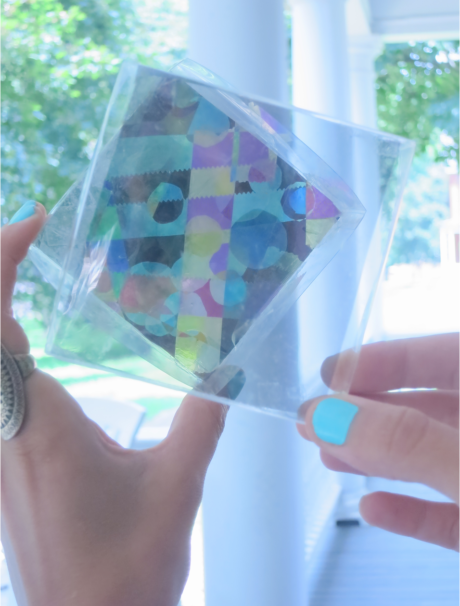
Polarization describes the orientation that energy vibrates to create light.
The polarization of light can be linear, elliptical, circular or in the case of white light a mixture of oscillation alignments. Linear polarized light is described by the direction of the Electric field, here is a diagram showing ‘vertically polarized’ light.
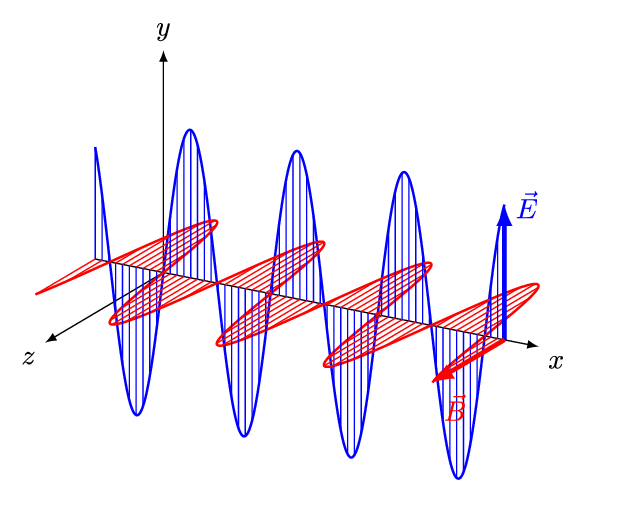
Diagrams above by And1mu via Wikipedia CC BY-SA 3.0
A polarizing filter only allows light that is aligned with its structure to pass through. If you overlay two polarizers with ‘crossed’ alignment almost all the light it blocked.
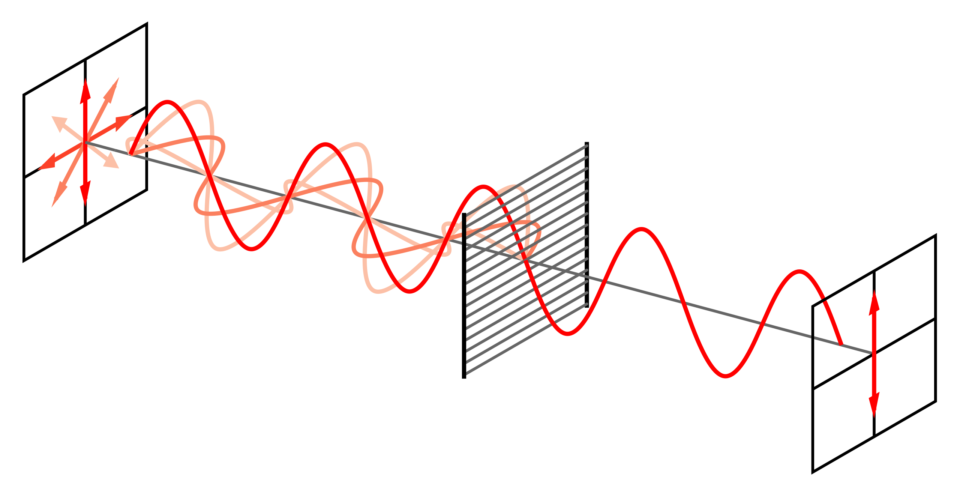
Unpolarized light (represented by the Electric field direction) passes through a linear Polarizer the Diagram by Fffred via Wikipedia CC BY-SA 3.0
Sticky-tape is birefringent – it is made of stretched plastic molecules that makes it optically less dense in one direction. Light waves oscillating inline with the elongated plastic molecules can travel faster spiting the light and causing the polarization direction to be shifted. The amount that the polarization is shifted depends on the wavelength (color).
Because the direction of polarization is shifted by the sticky-tape some light can pass through two crossed polarizers. Rotating one polarizer the wavelengths that can pass through the polarizers change, giving your sticky tape collage its color.
More about Polarization on Wikipedia




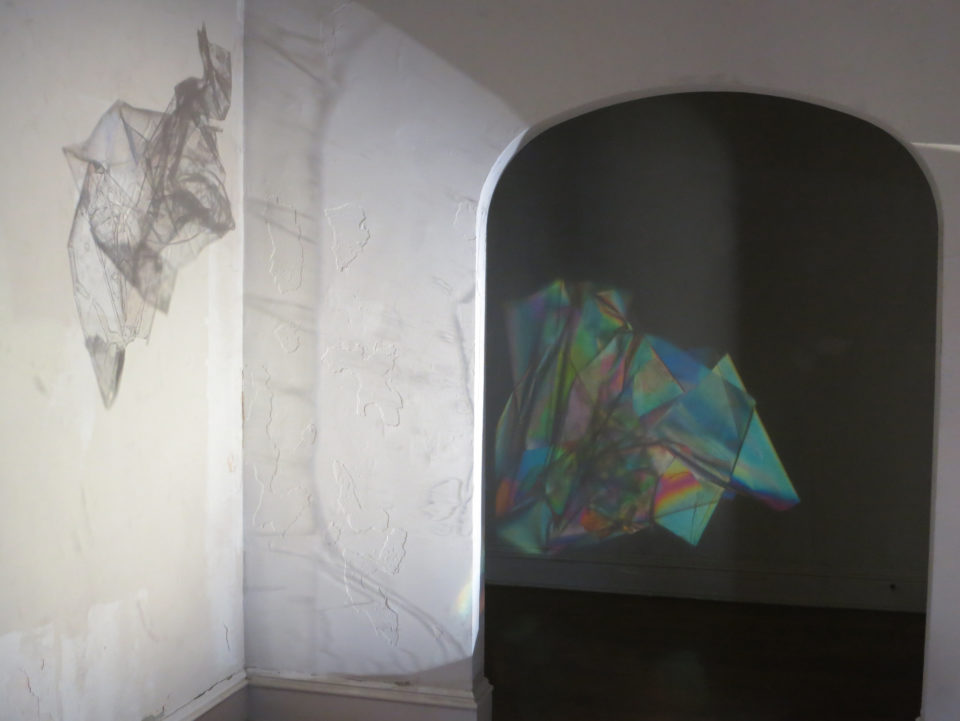


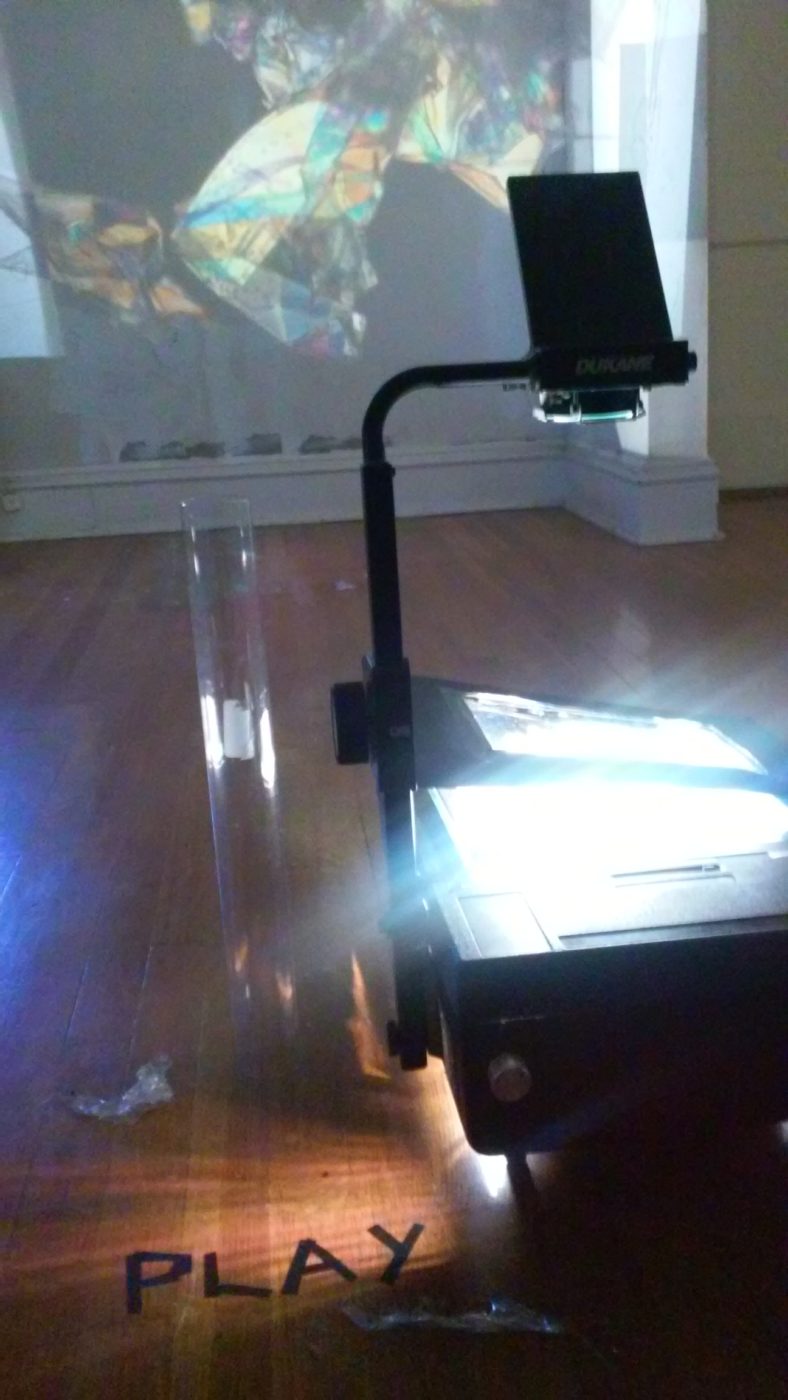
 Explore Light
Explore Light LIGHT WINDOWS Activities
LIGHT WINDOWS Activities